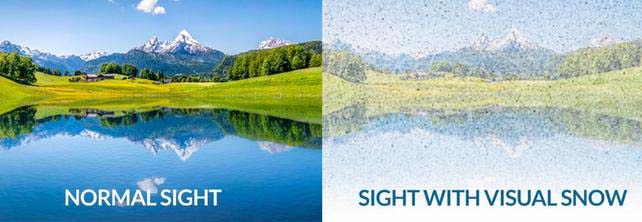

Visual snow syndrome (VSS) is an uncommon neurological condition in which the primary symptom is that affected individuals see persistent flickering white, black, transparent, or colored dots across the whole visual field. Other common symptoms are palinopsia, enhanced entoptic phenomena, photophobia, and headaches.
The condition is typically always present and has no known cure, as viable treatments are still under research. Migraine and tinnitus are common comorbidities and are both associated with a more severe presentation of the syndrome.
The cause of the syndrome is unclear.The underlying mechanism is believed to involve excessive excitability of neurons in the right lingual gyrus and left anterior lobe of cerebellum.
Research has been limited due to issues of case identification and diagnosis, the latter now largely addressed, and the limited size of any studied cohort. Initial functional brain imaging research suggests visual snow is a brain disorder.
There is no established treatment for visual snow syndrome. Medications that may be used to treat the condition include lamotrigine, acetazolamide, or verapamil. However, in absence of a secondary pharmaceutical indication, these do not necessarily result in benefits, and the evidence for their use is limited. Continue reading

Millions See The World Through a 'Static' Haze Called Visual-Snow Syndrome Science Alert - January 20, 2023
Visual-snow syndrome is a neurological condition with a constellation of visual and non-visual symptoms. The hallmark symptom is seeing static or clashing lights and flickering dots that obstruct your vision 24/7, whether your eyes are open or closed.